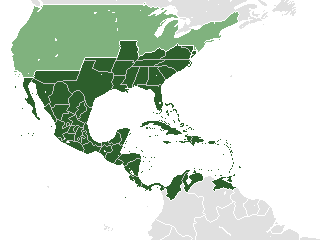 W
WThe Act of Independence of Central America, also known as the Act of Independence of Guatemala, is the legal document by which the Provincial Council of the Province of Guatemala proclaimed the independence of Central America from the Spanish Empire and invited the other provinces of the Captaincy General of Guatemala to send envoys to a congress to decide the form of the region's independence. It was enacted on 15 September 1821.
 W
WThe Captaincy General of Guatemala, also known as the Kingdom of Guatemala, was an administrative division of the Spanish Empire, under the viceroyalty of New Spain in Central America, including the present-day nations of Costa Rica, Nicaragua, Honduras, El Salvador, and Guatemala, and the Mexican state of Chiapas. The governor-captain general was also president of the Royal Audiencia of Guatemala, the superior court.
 W
WThe Federal Republic of Central America, also called the United Provinces of Central America in its first year of creation, was a sovereign state in Central America consisting of the territories of the former Captaincy General of Guatemala of New Spain. It existed from 1823 to 1841, as a republican democracy.
 W
WThe First Central American Civil War was a civil political and military conflict within the Federal Republic of Central America which lasted from 1826 until 1829. The civil war was fought between Liberal and Conservative lines with Francisco Morazán leading the Liberals and Manuel José Arce, a former Liberal, leading the Conservatives.
 W
WThe Golden Circle was an unrealized 1850s proposal by the Knights of the Golden Circle to expand the number of slave states. It envisioned the annexation of several areas — Mexico, Central America, northern parts of South America, Cuba, and the rest of the Caribbean — into the United States, in order to vastly increase the number of slave states and thus the power of the slave-holding Southern upper classes. After the Dred Scott Decision (1857) increased anti-slavery agitation, the Knights of the Golden Circle advocated that the Southern United States should secede, forming their own confederation, and then invade and annex the area of the golden circle to vastly expand the power of the South.
 W
WThe Intendancy of San Salvador was an administrative division of the Captaincy General of Guatemala, itself an administrative division of the Viceroyalty of New Spain which was a part of the Spanish Empire.
 W
WThe Viceroyalty of New Granada was the name given on 27 May 1717, to the jurisdiction of the Spanish Empire in northern South America, corresponding to modern Colombia, Ecuador, and Venezuela. Created in 1717 by king Felipe V, inside of a new territorial control policy, it was suspended in 1723 due to financial problems and was restored in 1739 until the independence movement suspended it again in 1810. The territory corresponding to Panama was incorporated later in 1739, and the provinces of Venezuela were separated from the Viceroyalty and assigned to the Captaincy General of Venezuela in 1777. In addition to these core areas, the territory of the Viceroyalty of New Granada included Guyana, southwestern Suriname, parts of northwestern Brazil, and northern Peru.